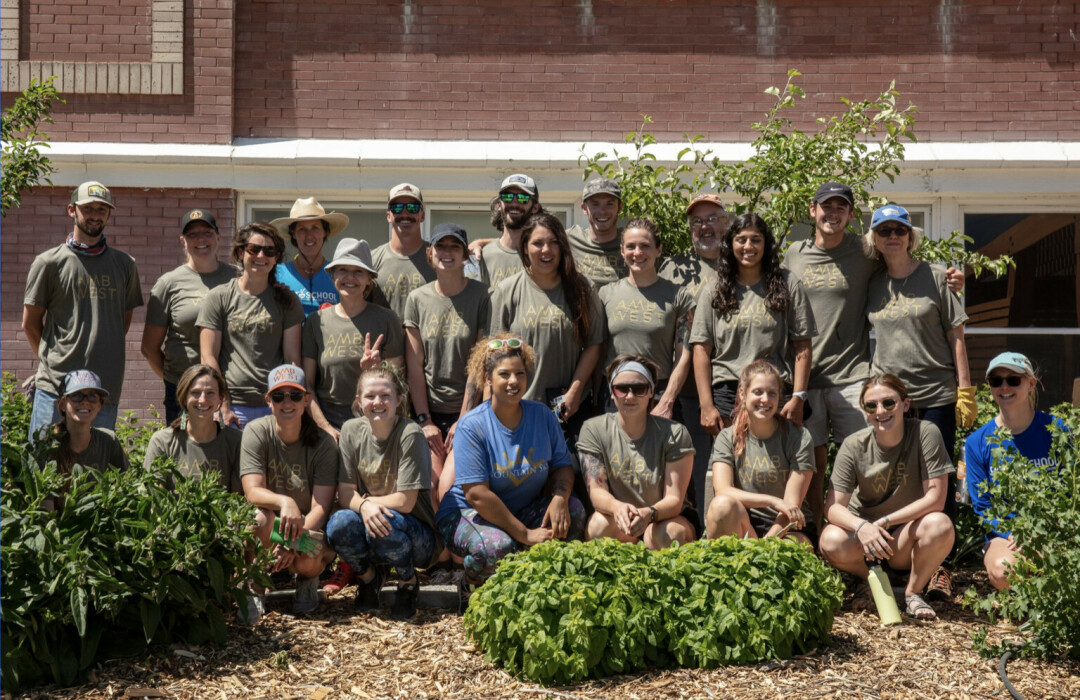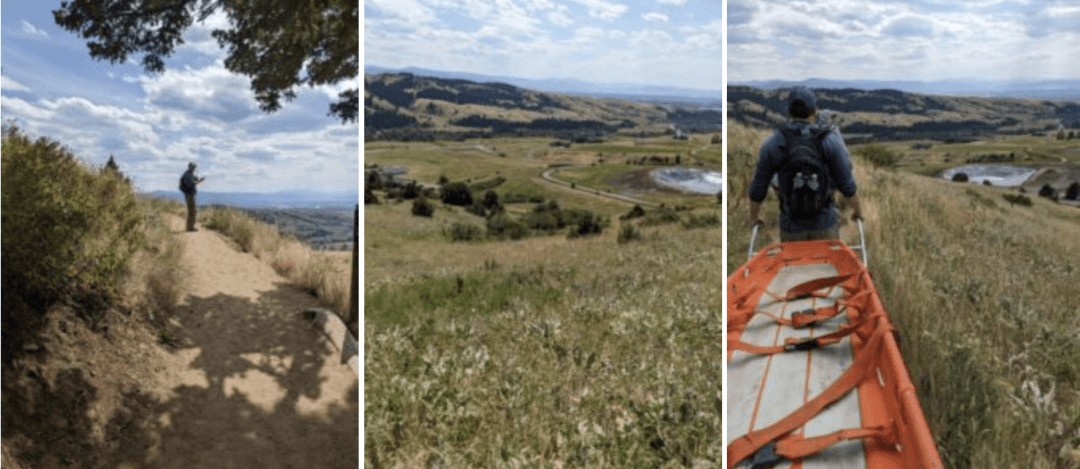
BOZEMAN — Montana State University’s nursing college has received a grant totaling $3.9 million that will enable MSU and its partners from across Montana to deliver quality medical, dental and behavioral health care to kids in rural and underserved areas while providing exceptional educational opportunities for MSU students. The four-year grant, which began July 1, is from the U.S. Health Resources Services Administration.
The grant funds the Nurse Education, Practice, Quality and Retention-Mobile Health Training Program, which allows teams of students from the MSU Mark and Robyn Jones College of Nursing to work alongside community health care providers to provide care via mobile clinics in five different Montana communities.
According to Laura Larsson, a nursing professor who is leading the grant, each of the MSU nursing college’s five campuses will be matched with a rural or tribal community to provide health care. Its Billings campus will partner with the Crow Nation; its Bozeman campus will partner with the Northern Cheyenne Nation; its Great Falls campus will partner with the Blackfeet Nation; its Missoula campus will partner with Ravalli County; and its Kalispell campus will partner with the Confederated Salish and Kootenai Tribes of the Flathead Nation.
Over the life of the grant, more than 600 nursing students are expected to participate, Larsson said, adding that nursing professors will travel to the sites with the students to guide learning.
Larsson said that 15 mobile clinics are scheduled for the upcoming year, with most sites set to have three clinics during the year. As part of those clinics – and under the supervision of MSU nursing faculty members – nursing students will complete health screenings, assessments and treatments that will include height and weight measurements; vision, hearing, blood lead, blood pressure and BMI screenings; immunizations; developmental screening, application of fluoride varnish and assistance with applying dental sealants; assessments measuring behavioral and developmental health; and more. Community partners who will work with and supervise the students include dental hygienists, nurse practitioners and clinical psychologists. A long-range goal would include establishing a perinatal mobile clinic, where students from a proposed certified nurse midwifery program that is in the early planning stages at MSU would have the opportunity to work with a mobile team to provide care in the weeks before and after childbirth, including blood pressure monitoring, diabetes management, urinalysis, parenting classes, oral health screening and care and more.
To prepare students for this work, the nursing college’s curriculum will be expanded to include more training in the economic and social conditions that influence individual and group health, or what is sometimes referred to as social determinants of health. In addition, students will receive multicultural and interprofessional practice education before traveling to operate these mobile clinics.
Many nursing students say they want the chance to go to rural areas of the state for some of their clinical work, Larsson said, but previously, it was too costly for most students. The grant, she said, now makes that travel possible for any student by covering transportation to and housing at the rural site. In addition, another obstacle to traveling to rural areas was it would have been challenging for students to keep up with their classes on campus. So the college has arranged the curriculum so that classes will not be planned for each group of students while they are traveling, or they can do independent studies during that time.
“Students and professors love these rural experiences,” Larsson said. “It’s why we are nurses. It’s hard work and it’s challenging, but we get to go into a community, meet new people and really help out.”
By expanding opportunities for nursing students to train in Montana’s rural communities, the mobile health training program will increase and strengthen the diversity, education and skills of the nursing workforce, Larsson said. That leads to better, culturally sensitive care in rural and underserved areas, she said.
“This program will provide enhanced education and training opportunities within collaborative, reciprocal partnerships,” Larsson said. “It aims to strengthen the capacity of nursing students to address and manage social determinants of health and improve health equity for vulnerable populations in rural and underserved areas.”
Larsson added that the Nurse Education, Practice, Quality and Retention-Mobile Health Training Program will expand nursing education by emphasizing leadership and effective communication skills, as well as innovative technological methods, such as telehealth, to deliver quality care in rural or underserved environments.
Larsson emphasized that the program will benefit both the students and the communities in which they serve. For the communities, benefits include bringing health care services to kids, as well as helping local Head Start programs to remain open.
“Without access to fairly comprehensive health care services, many rural communities can’t meet the federal requirements that are part and parcel with Head Start funding,” she said.
Working in the communities also brings tremendous benefits to MSU nursing students, Larsson said.
“The benefit to the students is equal to the benefit to the communities,” she said. “They learn so much. The experience gives them the opportunity to put data into action and to practice what they have learned where they are genuinely needed.”
The grant follows a four-year, nearly $2.8 million grant from HRSA that was designed to prepare MSU nursing students to practice in community-based primary care settings. In response to community member requests for help to keep their Head Starts open, four years ago MSU nursing faculty and students, together with dental hygiene partners, began traveling to offer quarterly clinics in classrooms and educational centers at the Northern Cheyenne Nation. Since that time, the MSU nursing college was invited to provide mobile, interprofessional clinics for the Crow Tribe, Blackfeet Nation and Salish-Kootenai tribes on the Flathead Nation.
“This evolution suggests that community demand for this type of service is high,” Larsson said. “Results indicate that MSU College of Nursing mobile clinics can effectively serve communities while brick-and-mortar institutions evolve.”
Sarah Shannon, dean of the MSU Mark and Robyn Jones College of Nursing, said this nearly $4 million HRSA grant is a true win-win.
“Thanks to Dr. Larsson’s vision and commitment to Montana’s rural and underserved communities, MSU will be able to provide much needed services through innovative mobile health clinics,” Shannon said. “At the same time, MSU nursing students will benefit immeasurably as they learn within, and from, these communities. Montana is a huge state and this federal grant will allow MSU college of nursing to continue to meet its mission to serve the entire state and all its residents.”
Larsson said that the work is deeply gratifying.
“This is the most fun work I’ve ever done – to get to be of service to communities and to get to build that bridge between tribal communities and health care teams,” Larsson said. “It’s an opportunity for all of our students, whether they’re from Indian country or not, to get to go practice skills in a different setting. That is extremely valuable.
“The whole point of a land-grant institution is to get to do this kind of work,” Larsson said. “It enables students to get out of their comfort zone and out of population centers where the campuses are and meet the health care needs of Montana.”






News Comments
Thank you
Open Auditions for Annie
Monday, Sep. 16, 2024
I’m at the Bozeman airport where your painting, “Blowing East” is displayed. It’s absolutely gorgeous! Bravo, Marci!!
The Artists’ Gallery in Bozeman’s Emerson Cultural Center May Exhibits
Sunday, Jun. 30, 2024
This is so typical of a sign in, which we should not have to do to check if we or some one in our party got a permit. I have been working or "creating an account" for 30 minutes and just get the same ...
Smith River permit drawing results available
Sunday, Mar. 10, 2024
I have struggled with this podcast and my own participation therein, the event itself obviously traumatic, but beyond that my inability to reach anyone and convey anything resembling truth. The person ...
Billings, MT Case Becomes True Crime Podcast | 'An Absurd Result'
Marktokarski
Saturday, Jan. 20, 2024